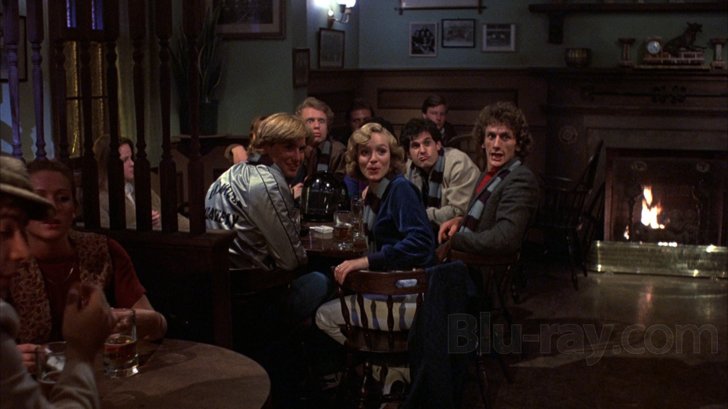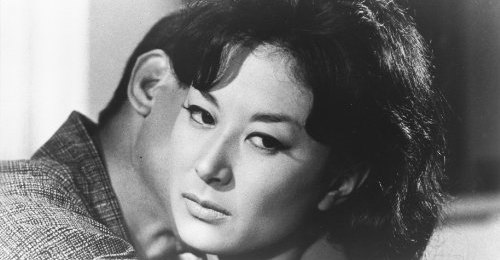“Downton Abbey” won an Emmy for Outstanding Miniseries and a Golden Globe for Best Mini-Series. But it didn’t win a top-series BAFTA Award, which is ironic, considering that this British series became the highest rated period drama in the U.K. since “Brideshead Revisited” (1981), with more than 10 million viewers tuning in.
It’s probably the best Masterpiece Classic I’ve seen in a long while, and that includes an awfully lot of good shows. The acting is first-rate, the characters (though recognizable types) are dripping with personality, the scenery and cinematography make you feel as if you’re living right there in Edwardian England during the First World War, and, as in “Upstairs, Downstairs” (1971), you get an account of both a wealthy family and the cadre of servants who take care of them—but have their own problems.
While “Upstairs, Downstairs” was set in a townhouse in the heart of London, “Downton Abbey” concerns a family of nobles who live in an ancestral mansion near a small town. It was filmed at Highclere Castle in Hampshire and the town of Bampton in Oxfordshire, and the pastoral and small-town setting offer a completely different perspective of Edwardian life and noble/commoner interaction than we saw in the popular 1971 series. In terms of its tone, its stakes, dramatic arcs, attention to detail, ensemble cast, and overall quality, “Downton Abbey” is superior to “Upstairs, Downstairs,” as good as that production was.
It didn’t surprise me at all to learn that “Downton Abbey” purportedly cost one million pounds per hour to film, because it has a filmic quality to it and the sets are so real and the performances so strong that you forget these are actors.
The richly textured and intelligent script from Julian Fellowes, who won an Oscar for “Gosford Park” (2001), feeds Dame Maggie Smith delicious lines to deliver with her incomparable mixture of crustiness, drollness, and mischief as the Dowager Countess of Grantham. Smith was a highlight the first season, and she’s just as fun to watch the second time around. When Smith is in a scene, her enormous presence fills the room, and each line (both facial and verbal) is like a ripe fruit to be savored. But while the others can’t quite match her onscreen charisma, the rest of the cast is nonetheless superb. They play off her nicely, too, especially Elizabeth McGovern as Cora, the American her son married in a merger of his title/estate and her money, and Mary (Michelle Dockery), the family’s oldest daughter. So much is done with facial gestures and posture in those two-shots that it makes you smile. They’re all so darned good, so believable.
Hugh Bonneville (“Iris,” “Notting Hill”), who plays Robert Crawley, Earl of Grantham, carries himself like an Earl–or, since I’ve never met one, how I think an Earl would act. An even-tempered man who feels his aristocratic lifestyle slipping away but determined to remain genteel, Crawley accepts what appears to be fate’s judgment. And he and his entire family are just as gracious during wartime, when Downton Abbey is turned into a convalescent hospital and they have to share the mansion with Army staff, nurses, and patients.
Because Crawley has no male offspring, Downton Abbey is suddenly slated to pass to Matthew Crawley (Dan Stevens), a distant cousin and virtual outsider who serves as an officer in the trenches of France this season while his abrasive and controlling mother, Isobel (Penelope Wilton) clashes with the still-current mistress of Downton Abbey over who’s to be in charge over the hospital operation and the servants.
This season, a number of plot lines intersect. Crawley daughter Edith (Laura Carmichael) finds her calling as the only family member to really pay attention to the wounded who have taken up residence in the house, and also spends time with a local farmer and his wife. Sybil (Jessica Brown-Findlay) finds herself pursued by the chauffeur (Allen Leech), and Mary is torn between the love she still feels for Matthew and the practical matter of marrying money—someone like the yellow journalist Sir Richard Carlisle (Iain Glen).
There’s drama below-decks too in the kitchen and servants’ quarters. The butler (Jim Carter, as Mr. Carson) in charge of all the male “footmen” and motherly housekeeper Mrs. Hughes (Phyllis Logan), in charge of all the female servants, have to deal with the departure of Mr. Bates (Brendan Coyle), who left under a cloud. But when a scheming Mrs. O’Brien (Siobhan Finneran) talks Lady Crawley into recommending that their former footman Thomas (Rob James-Collier), back in town following a medical discharge, manage the whole staff at Downton Abbey, it creates plenty of friction. Meanwhile, maid Anna (Siobhan Finnera) copes with the loss of Bates, and Bates’ ex-wife looms over everyone. Then there’s the meek Daisy, who’s manipulated this season into something shameful involving a former footman (Thomas Howes, as William) who’s become the latest in the house to head off to war.
Individually, the actors are fine, but when you put them together into an ensemble it’s quite an impressive whole that’s much stronger than the individual parts. That’s another strength of this series, and the dramas play out with the same talky but fascinating intensity of a “West Wing” episode . . . though slowed down to a 1913 pace. A word of warning to fans of the series that Season 2 has more melodrama than the first, with the appearance of a facially-scarred soldier with amnesia suddenly claiming to be a long-lost relative smacking of daytime soaps. But the other story lines are compelling enough to compensate for the weak moments.
Cinematographers David Katznelson and David Marsh do a lot of interesting things with deep-focus shots and stationary cameras, as they did the first season, and “Downton Abbey” is deftly edited so that you’re conscious of both the artistry and the flow. It’s beautiful to watch, and the actors make each scene beautiful to consider.
Video:
“Downton Abbey” is presented in 1.78:1 widescreen, “enhanced” for 16×9 televisions. As with Season 1, there are a lot of golds and browns in the palette which, along with muting of other colors, helps to convey a period look. Even reds aren’t fully saturated, and in the servants’ quarters grey and white and black create a different mood entirely from the “upstairs” segments. Skin tones are natural-looking, black levels pulled back just a little, and there’s just enough grain to make it all look appropriately aged. There’s a nice sense of 3-dimensionality with this release, and I saw only a few instances of aliasing with the AVC/MPEG-4 transfer to three 50GB discs that you wouldn’t notice if you weren’t looking for them. Some scenes with soft-focus backgrounds still have significant grain, but for the most part “Downton Abbey” looks noticeably superior in HD.
Audio:
The audio is better than Season 1—an English Dolby Digital 2.0 that’s full of rich tones and clear-as-a-bell dialogue. The 2.0 doesn’t do the war scenes justice, but it suffices for the mostly dialogue-driven scenes. Subtitles are in English SDH once again.
Extras:
There are three bonus features this season that fans will wish were longer: “Fashion and Uniforms,” “Romance in a Time of War,” and “House to Hospital,” all behind-the-scenes looks at what it takes to create the grand illusion of period reality.
Bottom Line:
“Downton Abbey” is wonderfully acted and beautifully filmed, and though the audio isn’t going to impress, the video presentation is stunning in 1080p.


